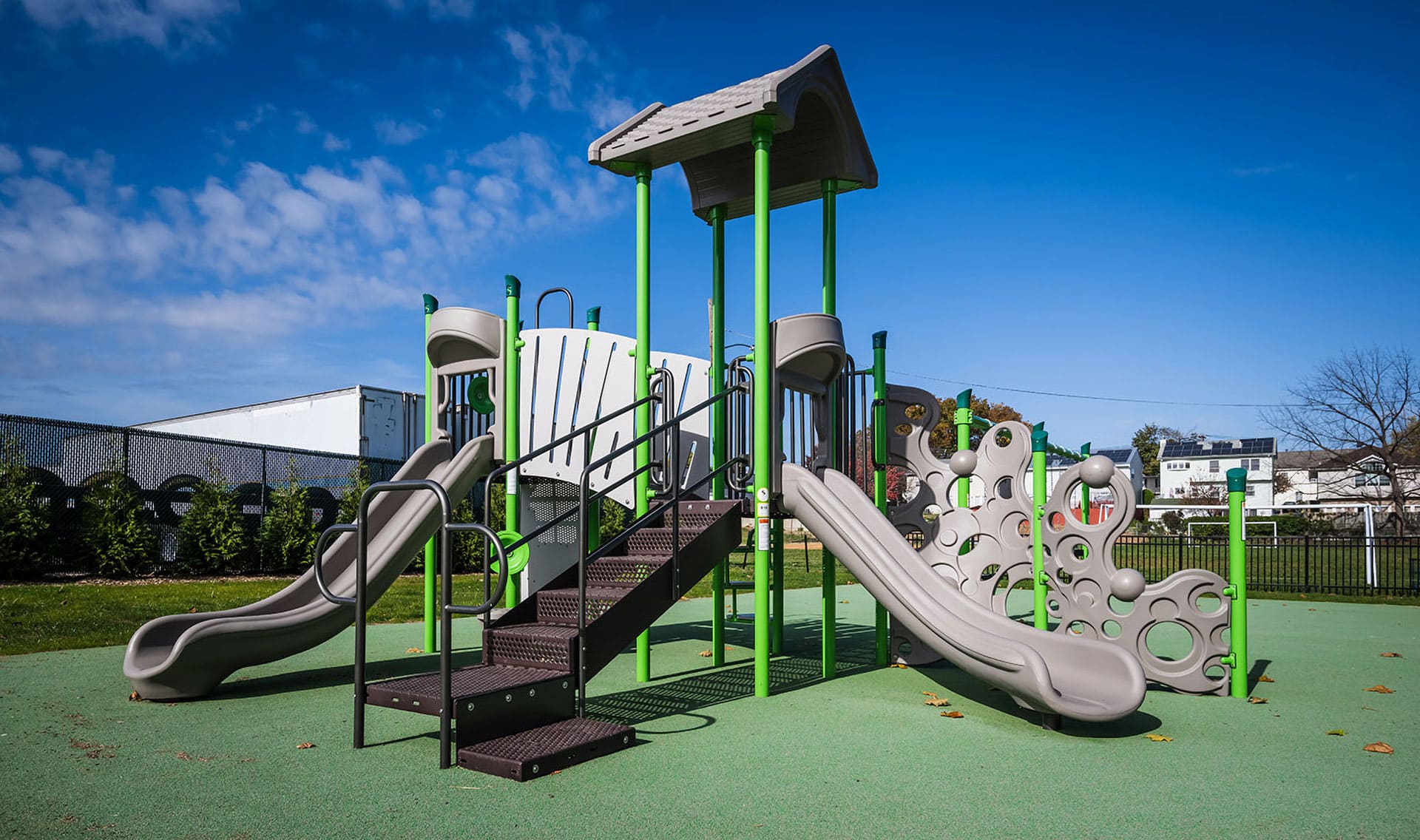The world of playgrounds is constantly evolving, integrating technological innovations, sustainable designs, and inclusive experiences to meet the needs of children, teenagers, and families. In 2025, outdoor play areas are transforming into spaces that go beyond fun, promoting holistic development and connection with the environment. Here are the most prominent trends that will shape this year:
1. Inclusive and Accessible Playgrounds
Inclusion remains a key priority in playground design. In 2025, we will see an increase in structures that enable children with physical, sensory, or cognitive disabilities to enjoy fully. This includes:
- Access ramps.
- Sensory games with textures, sounds, and colors.
- Ergonomic designs adapted to different needs.
The goal is to ensure that every child has the opportunity to participate and feel welcome.
2. Integration of Interactive Technology
Technology is revolutionizing how children interact with playgrounds. This year, elements such as the following will become more popular:
- Games with augmented reality (AR).
- Interactive lighting systems that respond to movement.
- Sensors that activate sounds or special effects when touched.
These advancements not only make play more exciting but also foster technological skills from an early age.
3. Sustainability and Eco-Friendly Design
Environmental care remains a crucial factor in designing new playgrounds. Structures made from sustainable materials such as certified wood, recycled plastic, and repurposed rubber are gaining popularity. Additionally, many play areas are incorporating:
- Vertical gardens and green roofs.
- Rainwater harvesting systems.
- Designs that blend harmoniously with the natural environment.
These playgrounds benefit not only children but also communities and the planet.
4. Focus on Wellbeing and Health
The physical and mental wellbeing of children is a priority in modern playground design. In 2025, we will see:
- Equipment that encourages physical activity, such as climbing circuits and balance tracks.
- Relaxation and mindfulness areas for children and parents.
- Games that promote collaboration and teamwork to strengthen social skills.
These spaces aim to balance physical activity with moments of calm and connection.
5. Thematic and Immersive Playgrounds
Thematic designs are on the rise, turning playgrounds into fantasy worlds where children can let their imaginations soar. This year, standout examples include:
- Play areas inspired by nature, such as enchanted forests or beaches.
- Spaces simulating miniature cities or space stations.
- Designs that tell stories and encourage creativity through play.
6. Integration of Musical Instruments
Music is becoming a key component in modern playgrounds. Outdoor musical instruments like xylophones, drums, and chimes allow children to explore sounds and rhythms while developing sensory and creative skills.
7. Intergenerational Spaces
More and more playgrounds are being designed to be enjoyed by people of all ages. This includes:
- Ergonomic benches and rest areas for adults.
- Games that invite participation from parents and grandparents.
- Multifunctional spaces that combine activity and social interaction.
These designs strengthen family and community bonds, making the playground a meeting point for everyone.
Conclusion
2025 brings more innovative, inclusive, and sustainable playgrounds than ever before. These new trends aim not only to entertain but also to enrich children’s development and promote community connection. If you’re considering updating or building a playground, these ideas will help you create a space that inspires and transcends generations.
